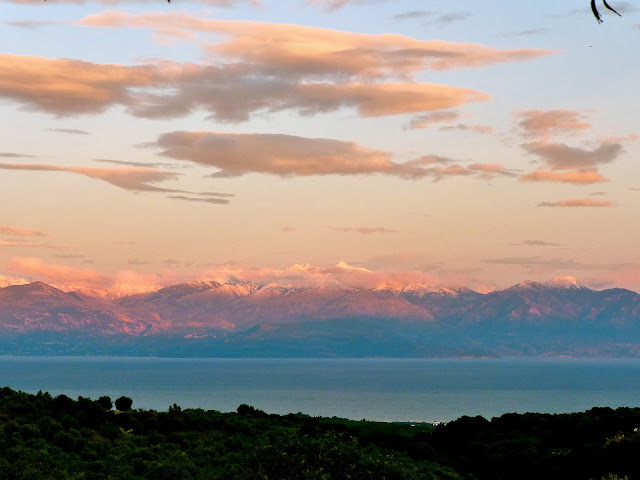On Wednesday, I had cause to visit Killarney, an attractive enough west of Ireland town. In common with most Irish towns I have visited, Killarney’s streets are lined with a great variety of small, gaily-painted, flower bedecked, independent shops, pubs and cafés. The people with whom I had dealings in Killarney, shop assistants, bar staff, taxi drivers, together with many total strangers, whose paths I merely crossed on the streets, were typically helpful, warm and friendly, but something about Killarney did not quite click with me; it is not a place to which I have any great desire to return. Maybe the gloomy, drizzly weather had something to do with my attitude; it was the fifth day in succession during which the sun had hardly found a single break in the cloud.

On my journey back from Killarney to Coomhola the clouds lifted and thinned to reveal stunning views of the eastern end of ‘The Ring of Kerry’, views that had earlier been largely hidden in mist. That the scenery here is beautiful, exceptionally so, can not be denied. However, intense commercial exploitation of relatively small areas of natural beauty, beauty spots, tourist attractions, both here in Ireland and elsewhere, in some queer way, seems to prevent my full engagement with the soul of a place. Inasmuch as ‘The Ring of Kerry’ is so very well road-signed, way-marked, served with lay-bys, view-points, catering facilities and souvenir shops, it is something of a tourist honey-pot which, even in mid-October attracts comparatively huge numbers of visitors.

However many coaches may be parked alongside my car in the lay-by however many shutter-happy fellow tourists may be recording the view with me; however many snack-bars and tourist gift shops may be cluttering the place, the view, the picture, the craggy mountains, waterfalls, rivered valleys lined with autumn-tinted trees reflected in mirror flat surfaces of myriad lakes can not be other than its reality; inviolably beautiful. It can not, I try to reason, be other, but however much I try to reason the stupidity of my irritation, to isolate myself from my immediate environment, to transport myself into, to be at one with the view before me, I can not. Crowds and commercial clutter seem to steal from me my personal place in this view; rather than its reality, I feel as if I am looking at something more like a huge reproduction of the scene before me; something artificial, something manufactured in Hollywood solely for public entertainment.
Back at The Giant’s Causeway, where I had been expecting to find a rocky sea-washed wilderness over which I would be free to wander alone and at will, I was so much disappointed to find the place more or less restricted and totally controlled by The National Trust who seem to have managed to artificialize, to ‘Disneyfy’, a whole natural landscape. I vowed to avoid in future all tourist attractions. The Giant’s Causeway is, I have no doubt, a huge commercial success. Builders are presently at work there on a huge new ‘visitor complex’, improved facilities for the Giant’s Causeway; what hubris!
The idea of an attraction the size of the ‘Ring of Kerry’ ever becoming similarly publicly privatized is, probably, nonsensical but when, along with many others, a coach-load of voluble spanish tourists among them, I made my snapshot records of beautiful Kerry at a well organised lay-by, the uneasy emotions I felt at the Giant’s Causeway’ echoed loud and clear.







